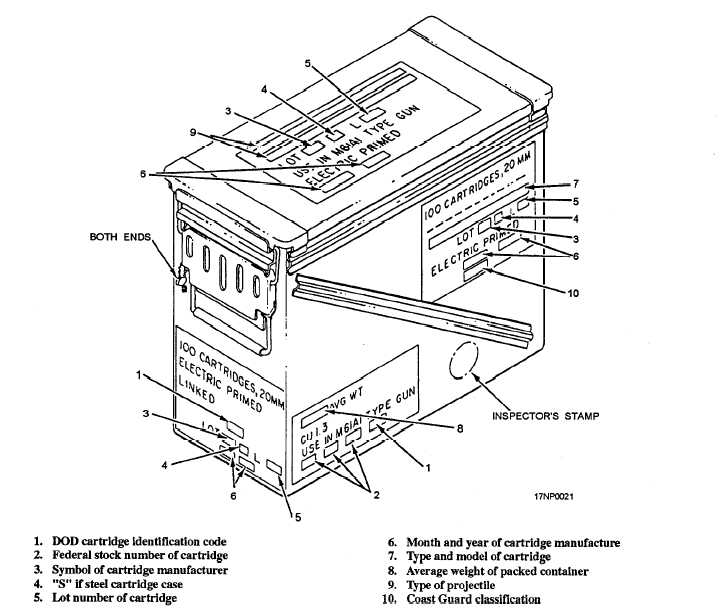cartridge; for example, 20MM HEI, 20MM TP, or 20MM
HEI-T. The second line gives the cartridge designation;
for example, M254, M55A2, or M220. The last line
consists of a code number that identifies the
manufacturer, interfix number, lot serial number, and year
of manufacture. The color of the letters has no meaning.
Color Coding
The color codes for the M50-configured 20-mm
ammunition are listed in table 7-2. You can see exactly
where colors are located on the projectile. The
projectile (fig. 7-4) is divided into sections marked A,
B, C, and D. The sections on the projectile match the
color code to columns in the figure.
By looking at table 7-2, you can identify
high-explosive incendiary-tracer round M242. First,
find the projectile and its color code in column A. Then,
look at section A of the projectile. This section of the
projectile isn’t painted; therefore, section A of the
projectile remains the natural color of the metal
(copper). Look at column B and find the color for
section B. Refer to section B of the projectile. This area
is painted yellow (high explosives), and section B1 is
painted red (incendiary). Use the same procedures for
sections C and D. Also note the red T markings in the
section B area just outside of the B1 section. The red T,
and in some cases orange T, shows the presence of an
incendiary explosive (tracer).
AMMUNITION CONTAINER M548
The M548 container (fig. 7-5) is made of metal. The
lid is attached by quick-release latches at both ends.
Figure 7-5.—Ammunition container M548 (typical).
7-5


